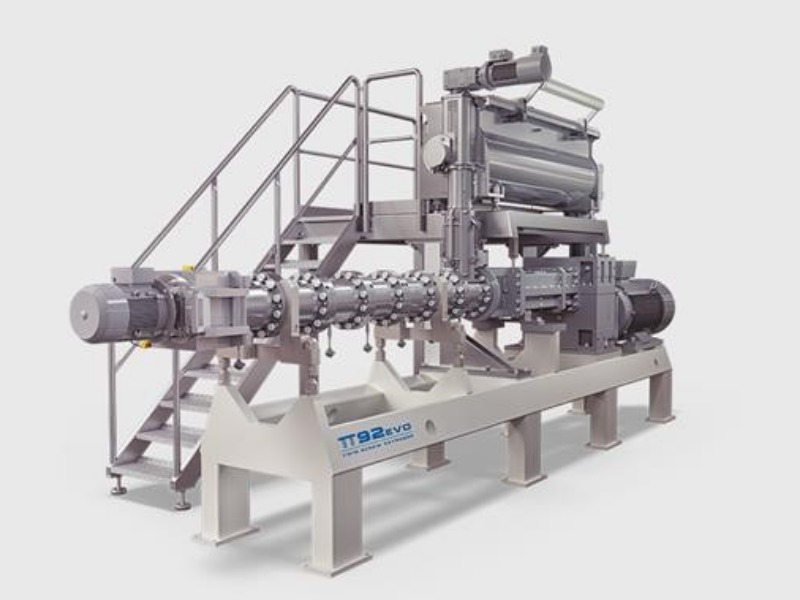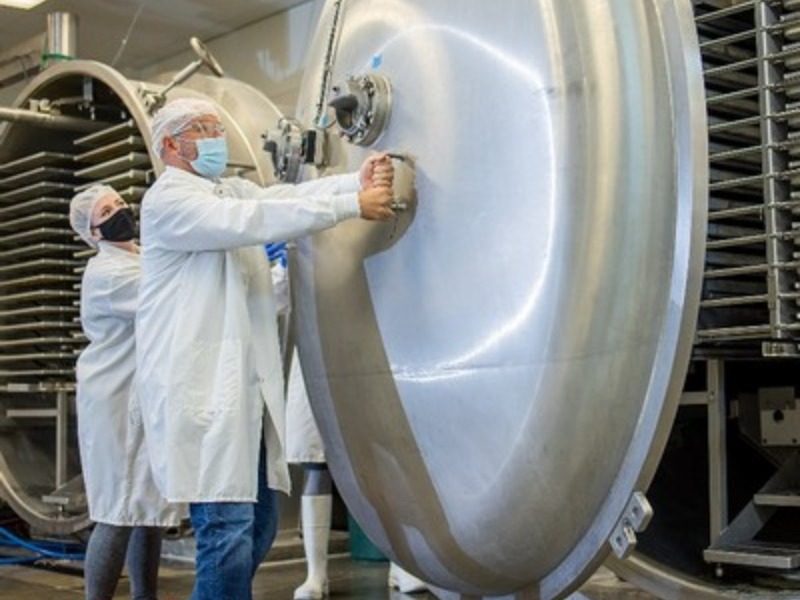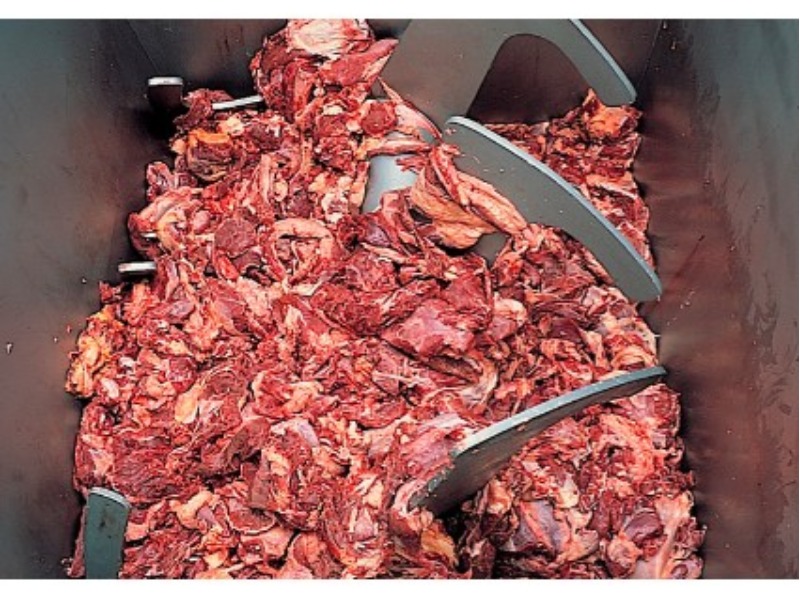

Gea Group
https://www.gea.com/es/company/index.jsp
Gea Group
About Company
About us
GEA is one of the largest technology suppliers for food processing and a wide range of other industries. The global group focuses on technologies, components and sustainable solutions for sophisticated production processes in diverse end-user markets. Our customers are at the heart of everything we do and we build strong partnerships with them. We provide individual and sustainable solutions for a wide range of customer-specific industries.
Founded in 1881, GEA has continued to develop and set new standards to meet the needs of the market and its customers. Today, GEA is a globally active and leading company, known for its outstanding technologies worldwide, particularly for the food industry.
We strive to be the world’s leading technology group, providing innovative and sustainable solutions for sophisticated process industries.
Dry Pet Food
On a market where customers increasingly demand products as similar as possible to the ones for humans from a nutritional and production quality point of view and for the variety of formats, our many years of experience in developing food processing technologies allow us to offer futuristic solutions able to set new standards on the market.
Our philosophy leads us to work alongside our customers, supporting them in creating and developing innovative products, helping them define the formulations, forms, consistencies, weights, flavors and colors that best satisfy the demands of the final consumer. We share their goal of obtaining an innovative and high-quality industrial production based on collaboration that starts with research and is embodied in the provision of the most advanced processing technologies.
Applications: kibbles, pillows, dental sticks.
R&D and pilot plant
We feed our success through constant and thoroughly organized Research & Development activities performed by a team of 30 people that includes process technicians, analysts and mechanics. They have at their disposal 2000 sq. m of facilities equipped with a completely new pilot plant capable of developing new products in all respects and a laboratory equipped with all types of instruments for chemical, chemical-physical and rheological analysis and nutritional/organoleptic testing.
Products
Company News
 Market Information
Market Information

2+ MIN





26/02/2024
GEA achieves key milestone: Science Based Targets initiative (SBTi) validates 2040 net-zero target
'We are proud of the validation by the SBTi,' said CEO Stefan Klebert. 'This shows that we are taking a pioneering role in climate action, because our net-zero pathway is not just ambitious but also in line with latest climate science.'
'The SBTi validation of our net-zero target puts GEA at the forefront of the mechanical engineering sector,' says Chief Sustainability Officer Dr. Nadine Sterley. 'To achieve our climate targets, we have drawn up a comprehensive Climate Transition Plan 2040. This sets out how we will further accelerate the transformation of our operations, our product portfolio and our supply chain.'
GEA's Climate Transition Plan 2040 specifies timings, the measures to be implemented as well the investments needed to achieve the net-zero target. The detailed Climate Transition Plan will be presented in March 2024. At the next Annual General Meeting on April 30, 2024, GEA plans to hold an advisory vote by shareholders on the Climate Transition Plan 2040 – the first of its kind within the DAX Index family of companies.
"This shows that we are taking a pioneering role in climate action, because our net-zero pathway is not just ambitious but also in line with latest climate science."- Stefan Klebert, CEO
GEA Climate targets
In December 2023, GEA announced its upgraded climate targets.
Short-term target 2026:
Reduction in GHG emissions from our own operations (Scope 1 and 2) by 60 percent by 2026. This target was originally set for 2030.
Medium-term targets for 2030:
Reduction in GHG emissions from our own operations (Scope 1 and 2) by 80 percent (previously: 60 percent reduction) by 2030. Reduction in product related GHG emissions (Scope 3) by 27.5 percent (previously: 18 percent reduction) by 2030.
Long-term target 2040: net zero.
Source: GEA.
 Market Information
Market Information

3+ MIN





12/01/2024
GEA explores potential of insect protein for animal feed
Since 2017, GEA has been supporting Future Green Solutions in carrying out research on processing black soldier larvae into nutritional animal feed by providing them with expertise, and a separating decanter. The Australian start-up believes the insect alternative to soy and fish protein and grains, could offer customers a sustainable long-term solution.
Traditionally, for the fish farming industry, animal feed manufacturers have focused on fish meal made from fish not used for human consumption, while for the livestock industry grains like corn are the main source of feed. However, as a result of caps on fishing, an unpredictable climate that is putting pressure on the supply and cost of grains and the demands of consumers, they are being forced to explore more sustainable sources.
According to Luke Wheat, CEO, Future Green Solutions, this is where protein rich insects like the black soldier fly, which have the potential to reduce carbon dioxide emissions and can be grown in small spaces, come in:
"We take farm waste and use the black soldier fly larvae to digest it. The insects are then processed into animal feed and what is left is used as a fertilizer. We're adding value to waste and then putting it back into the food stream as high value protein. The insects are produced in a controlled and methodical way that's not affected by changes in the climate."
Proven GEA technology enhances research
As part of the collaboration with Future Green Solutions, GEA supplied a three-phase separating decanter, which Dirk Sindermann, Head of Process Technology Renewables, Business Unit Separation, Separation and Flow Technologies, describes as the heart of the processing line:
"The decanter is responsible for separating the protein in the insects from the fat, which is one of the most important steps."
The decanter, along with the expertise provided by the Sales Support, Renewables & Process Technology Renewables teams in Oelde, Germany, as well as colleagues from GEA Australia, has allowed Future Green Solutions to go from a start-up conducting research to getting closer to the commercialization phase.
The decanter allows the company to produce a product that is low in fat and high in protein, making it much more valuable within the market.
High potential industry
For GEA, the collaboration is an opportunity to get a foot in the door in an industry which Dirk Sindermann describes as having big potential:
"The insect for protein industry is still very young and start-ups in particular are experimenting with different methods for the best possible production of proteins from insects. Through this collaboration, we can collect important data and gain experience."
"In the future, the production of insect proteins will take place on a large scale and due to our extensive and longtime expertise in recovering proteins from all kinds of sources – vegetable or animal based - GEA is the perfect partner for this growing industry.'
–Dirk Sindermann, Head of Process Technology Renewables at GEA.
Currently, Future Green Solutions continues to conduct trials and increase its production.
However, the company aims to open its first commercial facility within two years and is in talks about an agreement with a buyer that would keep several facilities running.
Why Australia?
The legislation around both the processing of insects for the food industry and the animal feed industry differs around the globe. GEA chose to partner with an Australian company because the country has more flexibility when it comes to feeding the insects farm waste or waste from canteens.
"Right now you cannot take the same approach in Europe, it's much more limited because of the legal framework. However, the Australian government has given Future Green Solutions a number of grants and is interested in pushing this type of development", says Dirk Sindermann.
For Luke Wheat, when looking to the future, he says GEA's involvement continues to be invaluable:
"We spent a lot of time on research and development of our process. But the key to moving forward has been GEA's separating decanter. My experience with GEA and GEA's people in Germany and here in Australia has been nothing but a pleasure. GEA understands the vision of where the insect industry is moving to and can see that it's a huge business opportunity.'
–Luke Wheat, CEO, Future Green Solutions.
Source: GEA Group
 Interviews
Interviews

3+ MIN





22/12/2023
Interview to Vanni Antonello - Application Manager at GEA Group
Under what premise and purpose does GEA currently work and design products and services? At the heart of GEA's services and products lies the customer, with their expectations, needs and product. That is the main goal when designing our systems and, in so doing, we set ourselves apart from other market players while keeping a special focus on the following: Design: Utmost flexibility: in today's rapidly evolving market, it is more necessary than ever to be able to rely on highly flexible systems and machinery designed to meet our customers' current and future needs. A single technology partner: having a single contact person during the key stages of the process, from handling raw materials to packaging, involves working with specialists who can solve the various issues that arise and transfer their knowledge to their customers' staff. Tailormade approach: customers have various requirements, but by drawing on its expertise in designing and manufacturing systems and machinery, GEA can meet customer demands promptly and efficiently. Service: The extensive network of GEA enables our sales staff and specialist technicians to support our customers at all times and provide assistance at short notice. In addition, we offer customer service packages such as: Health check: one of our specialized technicians will visit the plant twice a year to inspect its condition and maintenance, check operational efficiency, and recommend which spare parts need to be ordered depending on machine conditions (in this day and age, unplanned downtime is a cost that must be absolutely avoided). Differentiating service offering with various packages: bronze, silver and gold, with an increasing number of services that can be agreed with the customer in order to keep the costs of routine maintenance and, at higher levels, extraordinary maintenance under control. According to your vision and experience, what is the key to a successful process in pet food? Reliability, sustainability and automation. These three elements are what make the difference in a competitive market such as the Petfood market. Reliable machinery, which enables customers to obtain quality product without production downtime to avoid profit loss. Sustainability, which is to be achieved by using energy-efficient systems. And state-of-the-art automation, which allows the parameters of the system to be promptly adjusted in order to maximize its output. How do you see medium-term development in the pet food processing area? Flexibility will become increasingly crucial for making strategic choices regarding products and, consequently, technology as well. The petfood market is increasingly influenced by trends that are driven by taste preferences as well as dietary and medical/care requirements. Pet food can no longer be considered merely as food, but rather as a supplement to medical treatment that can be used to address animal health problems, and is highly recommended by vets. What proposals will the company present in terms of innovation in 2024? When it comes to technological advances, GEA focuses not only on researching new machinery but also on solutions that can improve the current state of the art, so that we can equip our customers with the means to keep up with the latest market trends. With this approach in mind, GEA is making major investments in sustainability by developing energy-saving solutions that consume less water, as well as in automation by developing sensors which, by incorporating artificial intelligence, will allow customers to make their systems more productive and autonomous. Source: GEA Group
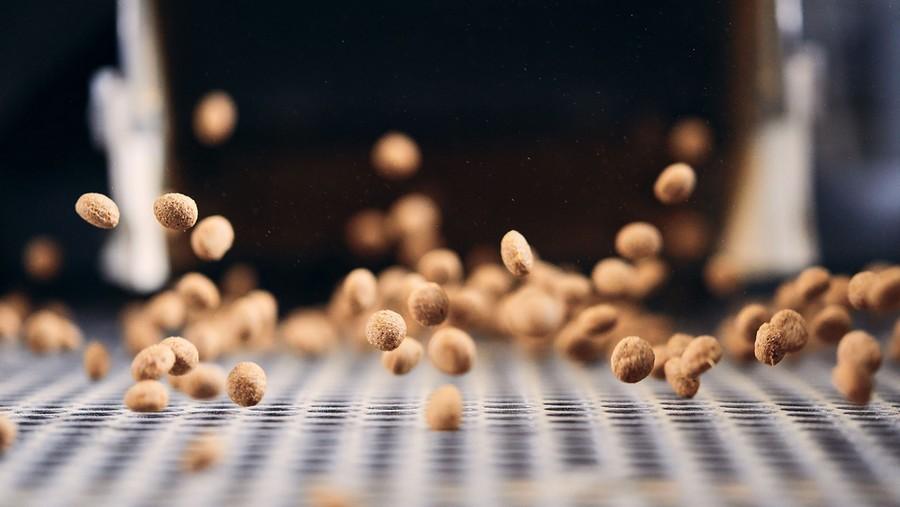 Extrusion
Extrusion

1+ MIN





30/05/2023
Taking Pet Food to a Premium Level
Flexible pet food solutions Pet owners often want to give their pets high quality, premium food, just as they would care for a child's diet. Nutrition, process control and food quality are complex and sophisticated topics and in order to stay ahead in the competitive pet food market, you need reliable technology that enables you to benefit from new business opportunities and create new food formats. With roots that go back to the very start of the food processing industry, GEA is in the privileged position of having over 80 years' experience. We have become true specialists in the areas we are active in, like spray and freeze drying, evaporation, filtration, meat preparation, extrusion and packaging for wet, dry pet food, treats and pet food ingredients. Serving the pet food industry Each solution is tailored to specific process needs, factory conditions and business objectives. We design our equipment to boost process efficiency, while offering safety and flexibility in terms of product development. We have a unique understanding of the pet food market and have installed numerous complete lines worldwide, all developed hand-in-hand with customers. Our technology covers a multitude of pet food areas, including Pet Food Ingredients Wet Pet Food Dry Pet Food Pet Food Treats Freeze-Dried Pet Food Whether you need a single machine to boost existing line performance or a complete solution for a new factory, GEA is the right partner for you. By GEA Source: All Pet Food
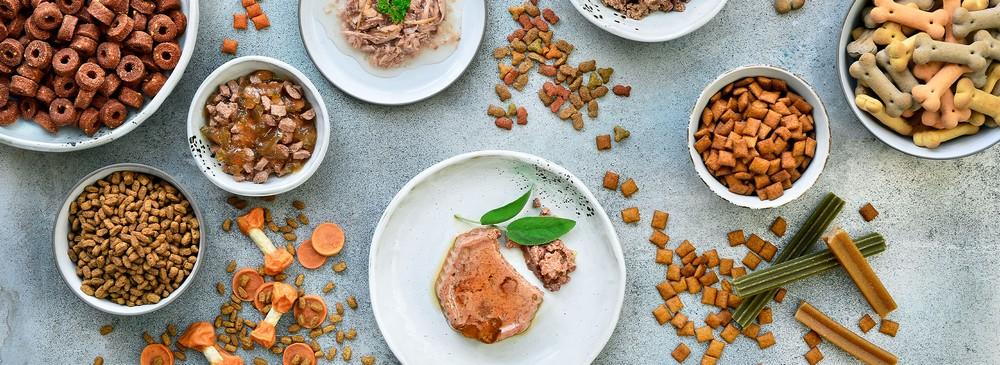 Extrusion
Extrusion

4+ MIN





28/11/2022
Pet Food: High quality cuisine for your pet
Pet food ingredients GEA technology plays a vital role in the preparation of high-quality ingredients for pet food. Microfiltration and ultrafiltration are used for the purification, fractionation and concentration of essential pet food components and flavorings from meat and plant extracts. Nanofiltration is sometimes incorporated to achieve better separation and concentration of key ingredients. The integration of reverse osmosis and evaporation provides an energy efficient, optimal dewatering step to prepare purified ingredients for economical spray drying. Manufacturers need to create ingredients of high quality with specific flavor characteristics. To meet these requirements our spray dryers and FILTERMAT® dryers are designed to operate at low temperatures, with a wide range of products, even those containing high concentrations of oils and hydrolyzed proteins, while preventing product deterioration during processing. GEA spray dryers produce powders that are optimized for extruded or pelletized products. Meat preparation technology for wet, dry and raw pet food Whether you need an automated meat preparation line, or a single machine that offers flexibility and versatility in batch production, GEA has the technology to help you. We have dedicated equipment for grinding, mixing, batching and handling. And equipment that combines cutting, mixing and emulsifying in one. This is complemented by automation and packaging solutions in line with the latest retail trends. Dry pet food extrusion The deep knowledge of technologies and processes learned from the world of food combined with the trend of humanization that is spreading in the world of pet food has led our technicians to the development of cooker extruders able to produce products with the highest levels of digestibility and nutrition. Our cooker-extruders combine the delicacy of cooking in a vaporization tank with the power and sanitization of the heat treatment of the extrusion, allowing us to obtain products that meet the most stringent quality requirement. We design and manufacture tailor-made extrusion lines for the production of any kind of dry pet food such as kibbles, pillows and various kind of treats. Our flexibility and knowledge of technology allows us to offer machines with high production capacity, solid and durable and able to adapt to any new product development or market need. Freezing solutions for pet food Before freeze drying the raw meat, cooked meat or kibbles need to be frozen. This is done by using Individual Quick Freezing (IQF) technology developed by GEA. Our full line of IQF tunnel freezers are designed to provide your bulk product with superior frozen quality. They are characterized by hygienic design, high yield and minimum energy consumption. The full and gentle fluidization during the freezing process ensures safe product handling and preservation of the product shape, colour and texture. IQF tunnel freezers can be configured to match the specific pet food application and customer requirements so that they are perfectly integrated into the processing line for pet food production. Freeze drying solutions for pet food Freeze drying is a form of dehydration in which pet food has its intrinsic moisture removed through sublimation. This preserves the overall structure and size of the final product, including its vitamins, proteins, flavors and colors. GEA scope of supply includes processing solutions for a variety of pet food products including freeze dried raw meat, cooked meat, kibbles, snacks and treats. The freeze-drying technology for raw pet foods allows them to keep their original properties, texture and uncooked appearance. GEA's RAY™ technology a highly efficient and economical batch freeze drying process. It has negligible power loss (less than 0.1%), low energy consumption, uniform drying, high sublimation capacities and a modular design. Small RAY™ cabinets can be de-iced in just 10 minutes whereas larger units benefit from the GEA's Continuous De-Icing System (CDI) to further reduce downtime. Pet food packaging solutions Packaging plays a critical role in the distribution, preservation and presentation of pet food. Differentiating your product on the shelf can be as important as the product's taste itself. GEA offers thermoforming equipment and vertical form fill and seal equipment that helps you meet today's operational challenges such as variety, process flexibility, uptime, reducing the cost per kilogram and per pack, food safety and the environment. Start to finish pet food solutions Whether you need a single machine to boost existing line performance or a complete solution for a new factory, GEA is the right partner for you. Multipurpose line for extruded dry pet food We design and manufacture tailor-made extrusion lines for the production of any kind of dry pet food such as kibbles, pillows and various kind of treats. Our flexibility and knowledge of technology allows us to offer machines with high production capacity, solid and durable and able to adapt to any new product development or market need. By GEA Source: All Pet Food
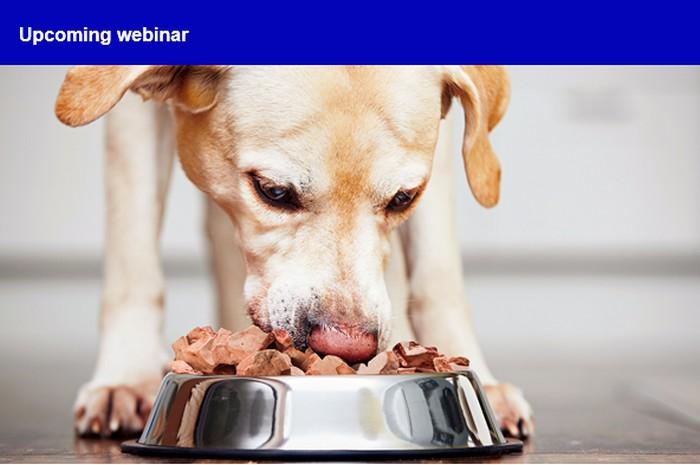 Drying
Drying

1+ MIN





31/08/2022
Unleash the potential of freeze-dried pet food
Date: Thursday Nov. 3rd
We will host two identical sessions. Please select the time slot that works best for you:
09:00 CET / 04:00 am US Eastern Time
Register here ›
17:00 CET / 12:00 pm US Eastern Time
Register here ›
About this webinar:
During this webinar you will:
Understand the benefits of freeze-dried pet food
Explore the pet food freeze-drying process
Learn about critical aspects and challenges
Get the opportunity to quiz our experts, Maite Harguindeguy and Morten Woldsted Pedersen
The webinar will last for 45 minutes, including Q&A.
Meet the experts:
Maite Harguindeguy – Process Specialist, GEA Process Engineering
Morten Woldsted Pedersen – Area Sales Manager, GEA Process Engineering
Can't make it? You should still register. All registered attendees will be able to access a recording of the presentation after the event, so you can still see the session on your own time.
by All Pet Food
 Extrusion
Extrusion

6+ MIN





08/08/2022
Great expectations: Manufacturing high quality pet food to please even the most finicky consumer
Dogs onboard the SS Normandie, a 1930s luxury French cruise liner, were offered a five-course menu, including a vegetarian option which their owners could choose for them. These pampered pets had their own private kennel, communal water fountain, fixed deck times, an onboard veterinarian and pet-sized life jackets. This historical factoid reveals an unchanging insight: that owners see their pets as one of the family and want what they define as the best for them when it comes to their health and wellbeing. What has changed: this sentiment and aspiration now extends well beyond the 'leisure' classes given that companionship-seeking is on the rise and more people have access to disposable income. This is not only pushing up pet ownership but also the desire for high quality pet foods and snacks.
Lifestyle changes driving growth in the dynamic pet food industry
The growing trend towards the humanization of our pets – which simply means that owners see them more and more as human and not animals – is the greatest driving factor in the pet food industry, particularly in the emerging markets.
Several key lifestyle and socioeconomic trends, which are expected to deepen, are encouraging pet ownership, such as:
longer life expectancy
delayed marriage & child rearing
reduced fertility rates
increased social atomization
Long valued for the affection they happily give and receive, pets are contributing to peoples' overall health, wellness and happiness – and in some cultures they even confer status. The extent to which pets have become so important is reflected, for example, in the number of cat cafés that have popped up – first in Asia and now around the world. In Taiwan, for instance, more single people are living in small apartments and unable to buy their own pets, escaping their solitary life by visiting cat cafés where they can enjoy giving and receiving a little affection while partaking of a coffee, tea or snack.
Pet food sales have grown most in the emerging markets of Asia and Latin America in recent years. And around the world, small dogs are in particular demand, with a 25% rise in global population between 2013 and 2018. However, cats are becoming increasingly popular because busy, on-the-go lifestyles mean more people prefer to spend their spare time relaxing at home; and because felines are more independent and require less outdoor activity, they are a more practical choice for many.
Fitting perfectly into these lifestyle changes is the greater availability of pet food sold online. Competitive pricing, loyalty discounts, free-shipping and delivery and personalization options, are a dream for pet owners, particularly those in urban areas. In the U.S., for example, e-commerce for dog and cat food grew by 10% between 2016 and 2018.
Pet food product and format trends
Pet owners' preferences are diverse, however high-meat, high protein content options as well as single meat source and nutrient-dense choices are popular, as are 'free-from' assurances and clean-label products made from the finest quality ingredients, including human-grade pet food. The environmental footprint of products is another aspect consumers are keeping an eye on which is driving the use of alternative proteins, such as insects. The first insect-based dog food in the UK went on sale in early 2019, preceded by similar product launches in the U.S. and mainland Europe. Transparency and traceability are also greatly appreciated, particularly in the shadow of albeit rare, yet life-threatening contamination scares and recalls.
According to Euromonitor International, producers should consider the following when developing pet food products:
Focus on innovations that entice pet owners
Increase product segmentation to cater to specific breeds, according to age and lifestyle
Move towards premiumization and the use of high quality products with functional ingredients that promote good health or boost energy
Link products to nationality/culture by using locally-sourced ingredients
Introduce new textures and formats that are more lightly processed or natural
Most pet food, including treats – particularly for dogs and cats – belong to one of three categories: wet, dry or raw. Meat, meat byproducts, cereals, grains, vitamins and minerals are the most common ingredients. Greater focus on pet health and wellness has resulted in explosion of new formats, such as:
Purees, liquids and pastes: allows pet owners to hand feed their pets to foster more intimacy
Soups and broths: appeal to fussy cats
Gently baked products: ideal for owners looking for more lightly processed and easy to digest options. Require longer cooking times but at lower temps
Cold-pressed: food is pressed and cooked quickly at a low temperature to preserve more nutrients. Provides pets with a raw and completely natural diet, and in a convenient dry food format
Freeze dried: moisture is removed from ingredients without the application of heat, preserving the most nutrients and qualifying it as raw pet food, in a convenient, dry format
Efficient GEA technology for producing high quality pet cuisine
With more than 80 years of experience in the food processing industry, GEA offers efficient processes and technologies for both automated and batch pet food processing. Our human-grade food solutions support manufacturers already at the ingredient level up to plant installation and includes technologies for dry, wet and raw pet food production, as well as packaging – ensuring products are attractive, have a long shelf life while minimizing transport costs.
GEA meat preparation technologies prepare ingredients for wet, dry and raw pet food processing. We offer dedicated equipment for pre-crushing, grinding, mixing, batching, emulsifying, pumping and handling, as well as machines that combine cutting, mixing and emulsifying in one.
In use since the 1950s, extrusion remains the most common production method of dry pet food, with products generally achieving a shelf-life of 10 to 12 months. GEA dry pet food capabilities (e.g. pillows, kibbles, dental sticks and biscuits) covers flour handling, as well as meat preparation and the entire extrusion process, encompassing drying, flavoring and cooling, as well as final product handling and packaging, including thermoforming and vertical form fill and seal equipment.
In line with consumer demand for more lightly processed and natural pet food, freeze dried kibble, snacks and protein bars can be categorized as 'raw pet food' given the temperature remains below 40 Celsius (100 degrees Fahrenheit). Freeze drying halts the biological action of decay, thus preserving more of the natural enzymes and vitamins in these foods. They also retain much of their original, uncooked appearance, making it not only an appealing but also a tasty and nutritious option for pets. Likewise, freeze dried foods are lightweight, have a long shelf life and can be stored at room temperature.
Manufacturers can also add a 'kill step,' known as high-pressure processing or high-pressure pasteurization (HPP), which some opt for, thus avoiding any issues with bacterial contamination.
Humanization and pet nutrition: finding a middle ground
It is well-established that pet owners are increasingly scrutinizing labels to ensure their pet food choices are meeting their expectations for high quality and functional ingredients. And yet, they often do so filtered through the lens of their own tastes and health sensibilities. This can make it challenging for manufacturers to create clean label products that also have scientifically proven health benefits for pets.
Since 2018, the Food and Drug Administration in the U.S., for example, has warned of a connection between heart disease and dogs that are fed grain-free diets. The focus, as most vets will agree, should be on whether or not a pet food product provides complete versus supplemental nutrition. As more scientific research becomes available, it stands to reason that pet owners will reach for products from brands that can back up their claims and products with scientifically-based studies on pet nutrition.
Source: GEA Technologies
by ALL Pet Food
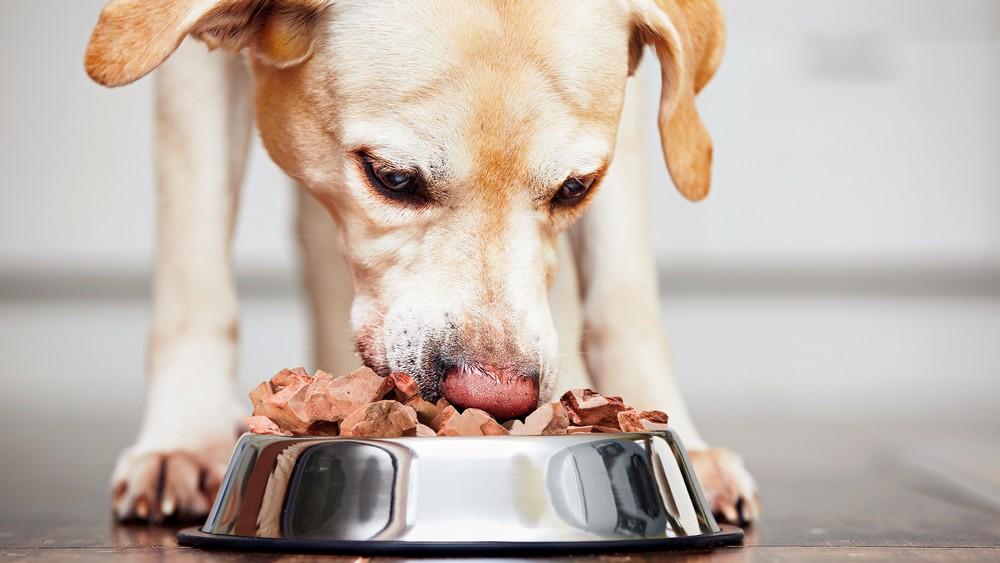 Drying
Drying

3+ MIN





29/07/2022
Frezze Drying Solutions for Pet Food
All pet owners want the best for their family friends, and rising affluence in many parts of the world has fueled the popularity of freeze-dried food for dogs and cats as a premium product. This has been particularly apparent for raw food which is increasingly seen as a healthier alternative to cooked products, retaining its natural nutrition, with lower salt and without additives.
Dried pet food has enjoyed great popularity for many years, however, freeze drying is increasingly seen as a viable option for the premium market. Freeze drying removes almost all the moisture from the product under extreme vacuum conditions (down to as low as 3-5%). This significantly increases the shelf life and allows drying at a very low temperature when compared with other dried food allowing manufacturers to create new products that can be stored unopened, at room temperature, for years, without spoiling. As the product is exposed only to low temperatures, freeze drying retains more of the nutritional characteristics of the food, for a healthier product.
Freeze-dried raw pet food
Raw meat pet food (Biologically Appropriate Raw Food (BARF)) is also becoming popular. Users report many benefits from feeding their pets raw food including: improved digestion, better dental health, easier weight control, shinier coat, reduced allergies, stronger immune system and fewer behavioral issues.
Although many accept the benefits of raw feeding, the inconvenience of handling and storing raw food can put some pet owners off. Freeze-drying the food, however, provides a fast and simple alternative. The drying process does not cook or heat treat the food, so it is still raw. The product can be reconstituted simply by adding water. This makes the food much easier to handle both for retailers and consumers and is particularly useful for owners who travel with their pets. What's more, most pets enjoy the taste of freeze-dried raw food, even those who are fussy eaters.
Types of freeze-dried pet food
A wide range of dog and cat food and treats can be freeze dried. These include: raw chicken, beef, turkey, etc. (95% meat, natural or minced and formed); cooked meat; kibble; snacks – such as biscuits and mixers; and special treats including protein bars. Kibble is usually 5-15% meat with vegetables, cereals, grain and relevant vitamins and minerals.
GEA technology, pilot plant and test facilities
GEA supplies equipment and complete lines for the preparation of pet food products including cutting, mixing, emulsifying, and forming; freezing and freeze-drying; and packaging. GEA know-how helps customers develop efficient, sustainable, high-quality manufacturing systems with maximum flexibility and the minimum effect on the environment.
The RAY® Pilot plant provides extensive test facilities for manufacturers to develop new products and perfect freeze-drying processes. This allows accurate data to be gathered and important process parameters to be optimized before the process is seamlessly scaled up to industrial-level production. GEA's engineers and technicians work closely with customers throughout the testing process to help them bring new products to market quickly and profitably.
For More information visit GEA Website HERE
by All Pet food
 Home
Home

5+ MIN





11/04/2022
Partnering customers in a new pet food era
Pet ownership is on the rise. This is in part due to the increase in single person dwellings and small family sizes, causing people to look for companionship to enrich their homes, a place studies show people are spending more of their free time. Now with an upswing in working-from-home and social distancing, pets are helping to fill an even greater void in times of uncertainty. As a result, it is estimated that the global market for pet food will reach $128.4 trillion by 2024, growing at a CAGR of 4.5 percent between 2019 and 2024. On the back side of this tremendous growth story is an increasing awareness of the environmental footprint of pet food, with estimates that for dogs and cats alone, their diet accounts for as much as 25 percent of greenhouse gas emissions of global meat production. Human-led trends driving growth in pet food sector In line with the growing pet humanization trend, many owners would more likely make compromises when it comes to the quality of their own diet before that of their pet's. Indeed, pet food is viewed as an essential product by pet owners – not unlike baby food. In addition to viewing pets more like members of the family, other key human-led trends influencing this sector include: increased online shopping demand for personalized foods demand for foods promoting resilience & well-being, including clean label options made from natural ingredients demand for foods with a smaller environmental footprint, including vegetarian & hybrid options Protein alternatives for pet food: challenges & opportunities Much of pet food today is still produced using rendered meats, muscle tissue and other meat co-products taken from the human food industry. Poultry is the most common animal protein source, making up roughly 80 percent of the meat protein used in pet food globally. As more consumers reduce their animal protein intake in favor of a flexitarian diet, this same shift is now evident in pet food selection, particularly in key pet food markets. When it comes to protein alternatives for pets, there is still a lot of debate about what constitutes the right nutritional balance. For example, while many dogs are able to digest and get the nutrients they need from plant sources, the same cannot be said for cats, which are obligate carnivores, requiring specific compounds, like taurine, an amino sulfonic acid, to be healthy. Because cats lack the enzyme to produce taurine on their own, they must absorb it from their food or via supplements. Plant-based ingredients have been integral ingredients in pet food for decades, however there is now increasing demand for vegetarian products as well as hybrid options where the bulk of the ingredients are based on plant or single-cell protein sources, with a greater focus on protein quality and nutrition. This accounts for the formulations now seen coming onto the market made from ingredients like kale, pumpkin or microalgae, as well as products from more established plant-based protein sources such as pea, soy or wheat. Pulses, the seeds of legumes, have a relatively high protein content and can be grown in a variety of climates; protein isolates from them are used to create nutritious cat milk; to produce dry and soft kibbles, as well as dental sticks and chew bones. Other ingredients, now gaining more traction, although not vegetarian, include the use of insects in pet food, given the high-quality proteins and fats extracted from them offer similar nutrition profiles to meat. Likewise, cultured products, which rely on a one-time sample (e.g., from a chicken) to produce 'animal-free' lab-grown meat protein, are just entering the market. Both reduce the environmental burden of pet food given they require fewer resources during the rearing or growing phase as well as during processing. GEA accompanies pet food customers from the ground up With more than 80 years of experience in the food processing industry, we support customers already at the pet food ingredients level – to meet color, texture and flavor requirements while also preventing bacterial contamination – all the way to creating new food formats, while offering solutions for automation and greater process control, to ensure efficiency and profitability. Whether customers are looking for a single machine to boost existing line performance or a complete solution for a new factory, GEA technology covers a wide variety of pet food processes, including spray and freeze drying, evaporation, filtration, meat preparation, extrusion and packaging for several pet food areas: Pet food ingredients Wet & dry pet food Pet treats Freeze dried pet food From developing innovative shapes, incorporating alternative proteins to creating unique textured products, our customers benefit from GEA's deep expertise and technology resources, which include the R&D facilities at our new Pet Food Experience Center (PEX), in northern Italy. The recently commissioned 1000 sqm facility is home to a team of 30 employees, including process and mechanical technicians and experienced staff running the laboratory where chemical, chemical-physical and rheological analysis and nutritional/organoleptic testing helps drive the co-development of pet food product innovation in cooperation with customers and industry partners. The center houses a complete solution line with the latest machinery technology for each processing step, including: mixing & milling section (flour mixer, hammer mill & plansifter) preparation section (grinders, mixers and emulsifiers) extrusion & inserts area (pre-conditioner & twin cooking extruder) tumbler & finishing section (tumbler, spray unit & flavoring drum) drying zone (static & continuous dryer) Customers can also attend interactive pet food workshops for hands-on learning to understand: how dry pet food extrusion-cooking technology works what the main process requirements are how to operate & maintain the equipment what role digitalization plays & how to use it in processes The facility also provides the ideal training ground for a customer's employees to learn about efficient processing and best practice, including: selection of raw materials, raw material intake, handling, weighing and dosing, mixing, grinding, conditioning, extrusion-cooking, forming, drying, coating and storage/packaging. These learnings can then be applied on the machines and line available at the PEX. By Klaus Raths, Head of Strategy and Business Development, GEA Food & Healthcare Technologies
 Trends
Trends

4+ MIN





19/10/2021
GEA raising the bar for sustainable heating and cooling solutions
By renaming and reshaping our Refrigeration Technologies division to GEA Heating & Refrigeration Technologies, we've empowered our teams of experts to contribute more than ever before. This is how we put 'engineering for a better world' into practice.
Raising the bar #1: better heat pumps
GEA Red Heat Pumps
Heat accounts for more than half of the global total final energy consumption. Despite best efforts, today it is still mainly produced using fossil fuels. If we are to limit global warming to 1.5 degrees Celsius compared to pre-industrial levels, we need a real game changer. When it comes to decarbonizing heat, heat pump technology with its proven track record is just that. Using heat pumps to cool our warming planet makes a lot of sense.
In that respect, we at GEA focus on extending the heat pump portfolio providing higher temperatures, which is exactly what's required for process heating in food and beverage production and district heating networks. Thanks to our strong in-house R&D, we constantly have technology leading products in the pipeline. We will soon be launching an extended product portfolio, with special emphasis on higher efficiency and reliability heat pumps based on a new line-up of high-pressure compressors. This will enable our customers to achieve higher supply temperatures for their processes than ever before.
Raising the bar #2: better use of data
Automation and digitalization are key elements in our climate strategy. Many of the new products that we will be launching as we go forward will benefit from data generated within our own organization and throughout the entire lifecycle of our equipment and solutions. By carefully analyzing these data, we gain insights that enable us to give our customers the best possible advice on how to further reduce energy consumption in and increase availability of their production plants. Better use of data ensures that our customers gain more speed on their road to decarbonization.
Raising the bar #3: better access to sustainable technology
As a technology leader, GEA is committed to driving change in the market. That's why we've recently launched a multi-million-euro investment in the extension of our test centers throughout Europe.
Thomas Strotkoetter, Head of the Compression Technologies Business Unit, says: 'Thanks to our extended testing facilities, our customers will have easier access to the latest heat pump technology and will be even more motivated to opt for the right sustainable solution for their applications.'
Raising the bar #4: better integration of heating and cooling
In applications such as food, beverage and dairy processing, products are usually heated up and then refrigerated. In seeking a sustainable approach, we felt that bringing cooling and heating together was the logical thing to do. A circular approach offers many advantages: it enables our customers to reduce and reuse as much energy as possible. Low-grade waste heat will be upcycled efficiently for all required processes.
Kai Becker, CEO of GEA Heating & Refrigeration Technologies, says: 'Our integrated cooling and heating solutions represent a real blueprint for converting heating operations from conventional to carbon-neutral in the food processing industry and in district heating networks, since the required heat is generated by largely reusing waste heat."
'At GEA, we strongly believe that collaboration and innovation are of the essence to remain at the forefront in tackling the climate challenges that lie ahead. That's why we bring our wealth of in-house expertise in cooling and heating closer together, and that's why we're now renaming our refrigeration technologies division to GEA Heating & Refrigeration Technologies.'
GEA Integrated Refrigeration and Heating Plant
Raising the bar #5: accelerated decarbonization transition
Time is running out for the world to change its ways if it is to achieve the goal of net-zero carbon emissions by 2040. By providing the most sustainable heating and cooling solutions and by minimizing our customers' carbon footprint as well as our own, GEA is tackling one aspect of climate change head-on.
Sustainable Engineering
Kai Becker adds: 'Being part of the GEA Group allows us to go even further. Combining our first-class products and solutions in cooling and heating in co-developments with GEA process experts, with customers and external partners leads to more sustainable and fully integrated applications. GEA has the knowledge, the technology and the ability to successfully implement innovative projects that enable customers to build green factories that comply with current and future emission targets.'
The SEnS initiative is an excellent example of our drive to ensure sustainable solutions for our customers worldwide. GEA's Sustainable Energy Solutions (SEnS) can revolutionize the integration of processes and utilities (cooling and heating) to force down energy consumption, reduce carbon footprint and slash total cost of ownership across multiple food industry sectors.
We're raising the bar for fully decarbonized food, beverage and dairy processing.
We're raising the bar for ourselves, our customers and our partners.
We're raising the bar to protect our planet for future generations.
Will you join us?
Source: Gea Group
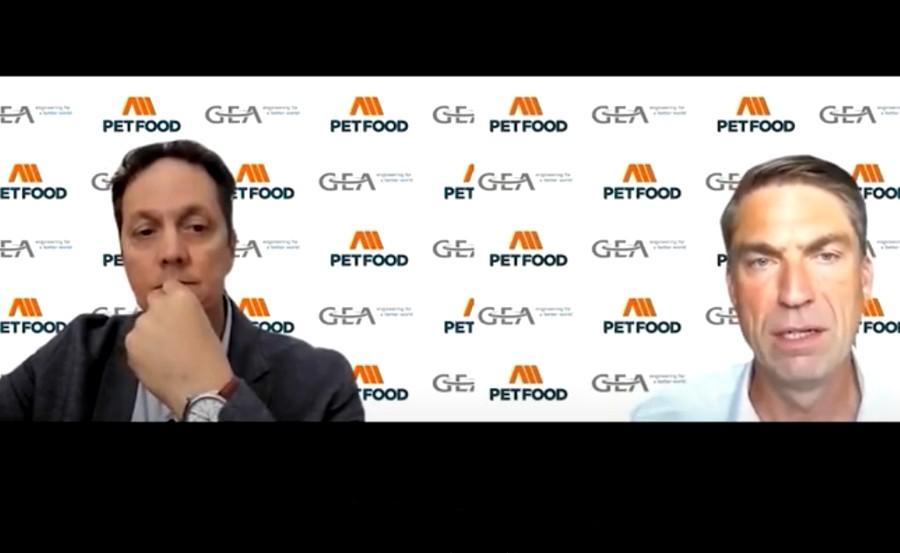 Interviews
Interviews

2+ MIN





15/10/2021
Interview with Klaus Rudolf, GEA Development Manager
Klaus Rudolf; GEA Development Manager, agreed to an interview conducted by All Pet Food team to discuss a bit about the company, its leadership worldwide and The Pet Food Technology Day, an online event to be held in just a few days !!! Iván Marquetti was in charge of the interview, which focused on GEA's technology, as well as the pet food areas involved. Starting from a brief introduction to the company and its world-class patented cutting edge technology, Klaus referenced the history of the company, focusing into GEA's patented technology and its flexibility in the Pet Food production. Klaus covered from equipments that can perform different functions in a dry food extrusion line, to one machine that can perform many of these functions by itself, revealing the oustanding flexibility of its technology. ent for pet food plants in the region. He also emphasized on GEA's presence in Latin America with the acquisition of GEA-Pavan in 2017, and the subsequent sale of equipment for pet food plants in the region. Finally, the interview focused on the pet food production boom worldwide on the wake of the pandemic, its trends and new ways of feeding our four-legged friends, until reaching The Pet Food Technology Day, an online event organized by GEA, which will be held on October 26th, with an important line up of speakers, the current production issues , new trends and solutions for pet food. Undoubtedly an interview nobody can miss, which also contributes to the modern pet food production If you want to register in The Pet Food Technology Day and stay updated, just Click HERE. by All Pet Food
 Extrusion
Extrusion

2+ MIN





03/09/2021
GEA launches its new xTru Twin 140 extruder completing its range of highcapacity output equipment
The new top-of-the-range machine is equipped with an advanced profile; powered screws provide users up to 40 percent increased capacity with the same efficiency, quality and footprint as previous models. Additionally, this high-capacity technology can be applied to the other models of the GEA xTru Twin extruders too – models 70/92/112 – and retrofitted to older machines to increase their capacity without changing the floorplan of the factory.
The GEA xTru Twin extruders offer the flexibility to produce a wide range of products including: cereal-based snack pellets die-cut, 2D, 3D, multilayers, square shape, punched and direct expanded; breakfast cereals; dry pet food; and any other extruded food product. The latest xTru Twin 140 has a production capacity of over 3 tons of pellets and 10 tons of pet food kibbles an hour.
More capacity but same footprint ... same machine!
To achieve the additional capacity GEA engineers have used their experience and know-how to increase the crosssectional area, rotation speed and pitch of the screws on the new machines while maintaining the extruder footprint and screw length. This also allows customers to upgrade existing machines without buying a new one or changing the plant layout.
Increased quality, hygiene and safety
Other key features of the GEA xTru Twin range include: A high-speed premixer for perfectly hydrating flour; a large, curved mixing vessel that facilitates good water absorption and adhering to the requisite hygiene standards; a vertical forced feeding screw to control the dough's movement into the cooking screw; a powerful, variable speed motor with a safety clutch; a high-torque, double cascade gearbox that ensures excellent power reserves and safety. With its co-rotating, fully intermeshing twin screws, a modular barrel assists in properly cooking cerealbased dough.
Driven by customer demand
GEA embarked on the process of developing the new technology in response to customers' requests and the market's need for a single, high-capacity machine capable of producing a wide range of innovative food shapes.
Thanks to this new technology's flexibility, customers can develop new products and get them to market quicklyand profitably.
The upgraded GEA xTru Twin 92 high-capacity extruder offer users up to 40 percent higher capacity with the same efficiency, quality and footprint.
The new xTru Twin 140 extruder completes GEA's high-performance extruder range.
Aditional information
GEA Snack Pellet Processing Brochure
GEA pet Food Processing Brochure
Source: Gea Group


